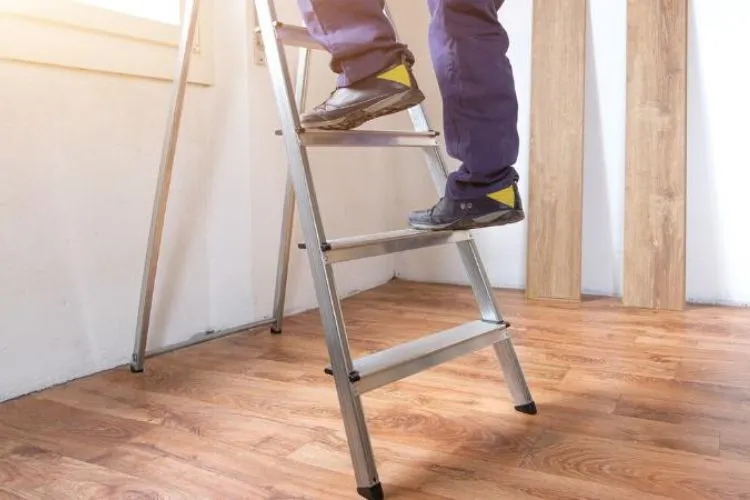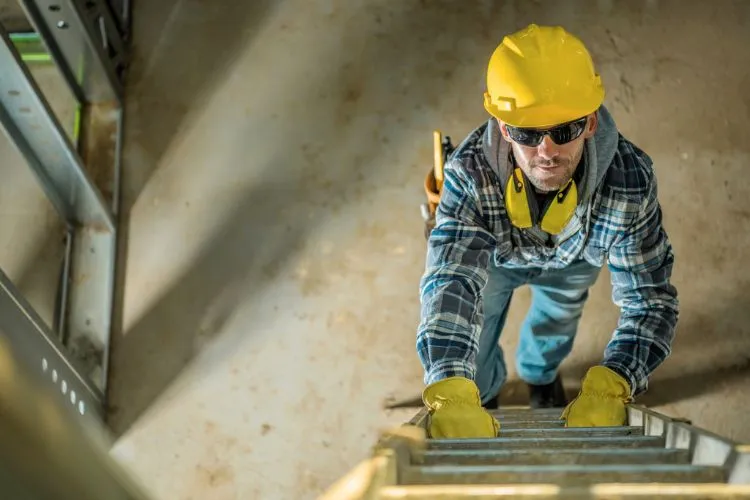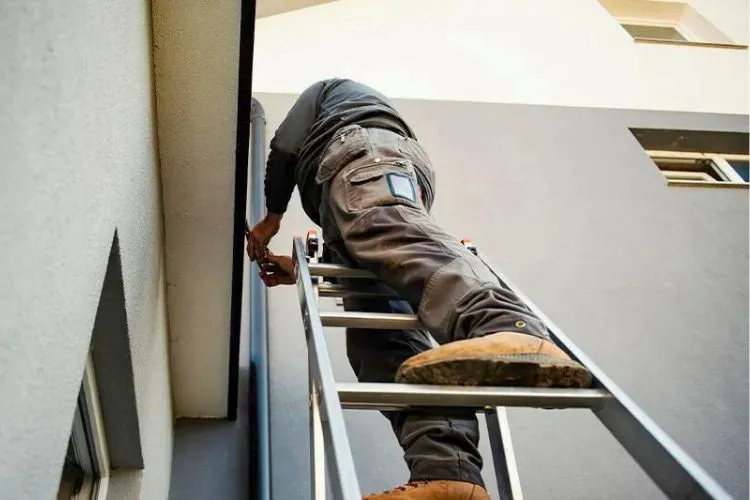At the heart of every tool lies the principle of safety, and ladders are no exception to this rule. A vital component to many residential and construction tasks, the humble ladder often takes center stage in activities that require vertical reach.
However, despite their seemingly straightforward usage pattern, ladders can also carry an inherent risk if not properly inspected and maintained.
This guide aims to underline what to look for when inspecting a ladder before use to make you aware about the importance of a detailed ladder inspection before stepping onto the first rung.

Why Inspecting Your Ladder is Crucial?
The old adage, “an ounce of prevention is worth a pound of cure” is exceptionally fitting when discussing ladder safety. Ladders in poor condition or with concealed damage can result in devastating falls, causing severe injury or even death.
According to the U.S. Bureau of Labor Statistics, falls from elevations were the third leading cause of workplace fatalities in 2019, with ladders accounting for a notable portion of these incidents. Thus, the critical importance of ladder inspection is paramount—your safety, and the safety of others, may literally hinge on it.
When to Inspect Your Ladder?
The ideal time to inspect your ladder is before every use. In fact, considering the tragic statistics mentioned earlier, anything less than a meticulous pre-use inspection could be excessive risk. Ladders should also undergo routine maintenance inspections, especially in work settings.

It’s important to remember not to wait until a fall or accident occurs to conduct an inspection. Other triggers for inspection should include instances when the ladder suffers any significant impact, such as being dropped, or if the ladder has stayed immobile under harsh environmental conditions for an extended period.
What To Look For When Inspecting A Ladder Before Use?
The steps or rungs of a ladder are where a user’s full weight will rest, hence, these need to be in impeccable condition. Check for any indications of wear and tear, including cracks, warping, bends, or splits. Loose or missing parts suggest the ladder’s structural integrity is compromised and it should not be used.
- Ladder Feet: Ladder feet, or the base, ground the ladder providing stability. Any missing or worn-out non-slip pads, or feet that seem unstable can lead to dangerous slips. It is equally vital to ensure that the ladder feet are not damaged, soft, or show signs of excessive wear.
- Rails and Side Members: Examine the side rails for bends, cracks, dents, or breaks. Any such damages can cause the ladder to buckle under weight. Also, look for signs of corrosion which can weaken the ladder over time. Loosened rivets are a red flag too, as these connect critical structural elements together.
- Locks and Hinges: For extendable ladders, the locks and hinges must function properly. These elements ensure the ladder stays in place while in use. Check that they engage fully and do not show signs of rust, bending, or distortions.
- Cleanliness and Maintenance: Finally, cleanliness and maintenance are key to a ladder’s longevity. Before and after each use, ensure your ladder is free from oil, grease, or slippery substances. Materials adhering to a ladder can also conceal defects or potentially cause corrosion.
Tips for Maintaining Your Ladder
Proper maintenance and storage can significantly extend the lifespan of your ladder and ensure its reliable performance. Store your ladder in a dry, sheltered place to protect it from inclement weather that could cause corrosion or other damage.

Clean it after each use, removing debris and wiping down surfaces to prevent the buildup of substances like grease or paint that might hide a defect or cause slips.
What to Do If Your Ladder Fails Inspection?
Should your ladder fail an inspection, first and foremost, do not use it. Label or tag it as unsafe for use, and remove it from the workplace or area immediately. If fixable, have repairs done by a ladder professional. If not, dispose of the ladder properly so it doesn’t accidentally get used.
Frequently Asked Questions (FAQs)
How often should a ladder be inspected?
Ladders should be inspected before each use, after any incidents such as being dropped, and at regular intervals (for example, every six months for workplace ladders).
Can a slightly damaged ladder be repaired, or should it be replaced?
Whether a ladder can be repaired depends on the nature and extent of the damage. If unsure, consult an expert. However, if there is any doubt about a ladder’s safety, it is better to replace it.
Are there different inspection criteria for different types of ladders (e.g., step ladders, extension ladders)?
While the basics—checking for damage, wear and tear, and functionality—apply to all ladder types, different ladder designs may have specific elements that need inspection, such as hinges on multi-purpose ladders.
Conclusion:
In conclusion, inspecting your ladder is a vital step and a prerequisite to using it. By staying vigilant and incorporating regular inspections into your ladder usage, you are taking an essential stride to ensure safety for yourself and those around you. Remember, every single rung counts when it comes to ladder safety!


